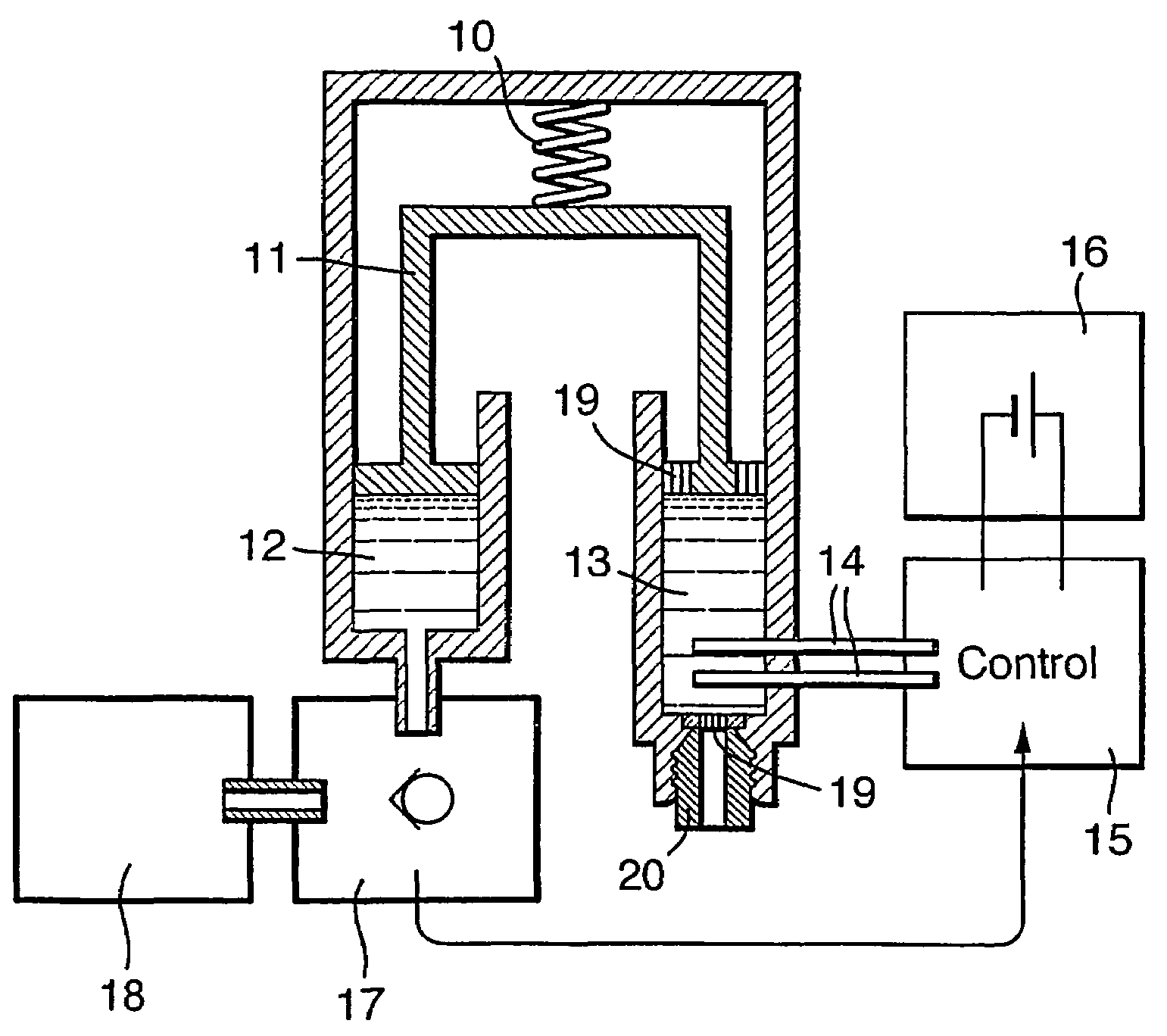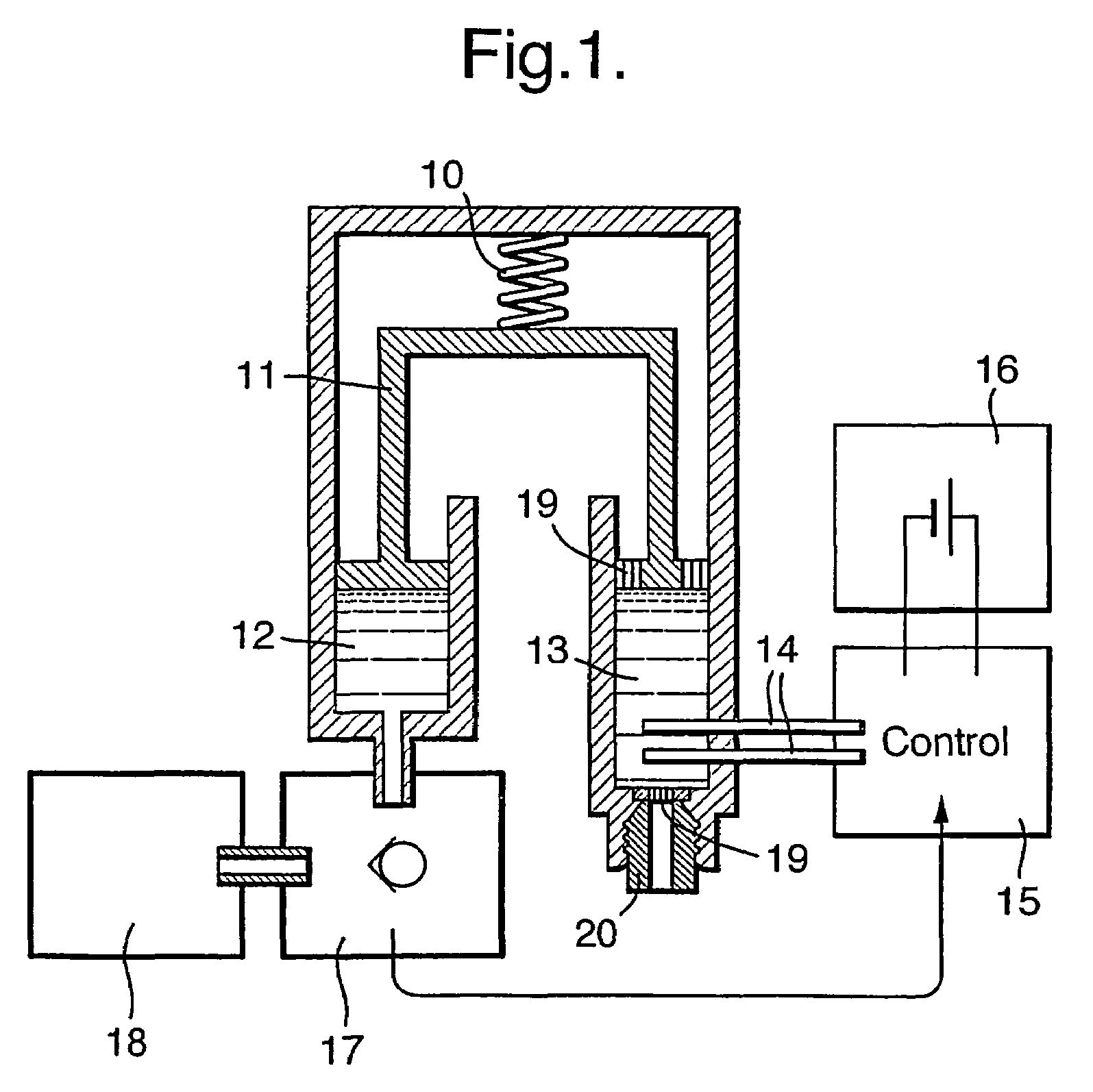Drug infusion device
a technology of infusion device and drug, which is applied in the direction of automatic syringes, process and machine control, instruments, etc., can solve the problems of limiting the portability of infusion device for ambulatory patients in hospitals or at home, demanding very tight manufacturing tolerances, and being too expensive to be used as disposable products, etc., to achieve stable and constant infusion device
- Summary
- Abstract
- Description
- Claims
- Application Information
AI Technical Summary
Benefits of technology
Problems solved by technology
Method used
Image
Examples
Embodiment Construction
[0043]FIG. 1 shows a schematic representation of the main functional elements of a disposable infusion device. Said device can be either attached to a strap or belt, or adhered to the body. In a preferred embodiment, the pressure-generation means driving the infusion is provided by a spring 10 such as a stainless steel “coil spring”. Said spring serves to provide a source of force along the axis 11. Advantageously, the tolerance of this spring is not a critical factor in the design of the infusion device; it is sufficient that the force is provided in excess, albeit limited such that the pressure applied to the drug remains below the values that could be harmful to the body and / or are limited by regulations and standards. Said axis 11 in turn applies force to the contents of two chambers: the drug reservoir chamber 12 and the control chamber 13. In a preferred embodiment, the control chamber 13 contains an electrolysis solution (composed of water and salt) together with electrodes 1...
PUM
 Login to View More
Login to View More Abstract
Description
Claims
Application Information
 Login to View More
Login to View More - R&D
- Intellectual Property
- Life Sciences
- Materials
- Tech Scout
- Unparalleled Data Quality
- Higher Quality Content
- 60% Fewer Hallucinations
Browse by: Latest US Patents, China's latest patents, Technical Efficacy Thesaurus, Application Domain, Technology Topic, Popular Technical Reports.
© 2025 PatSnap. All rights reserved.Legal|Privacy policy|Modern Slavery Act Transparency Statement|Sitemap|About US| Contact US: help@patsnap.com



